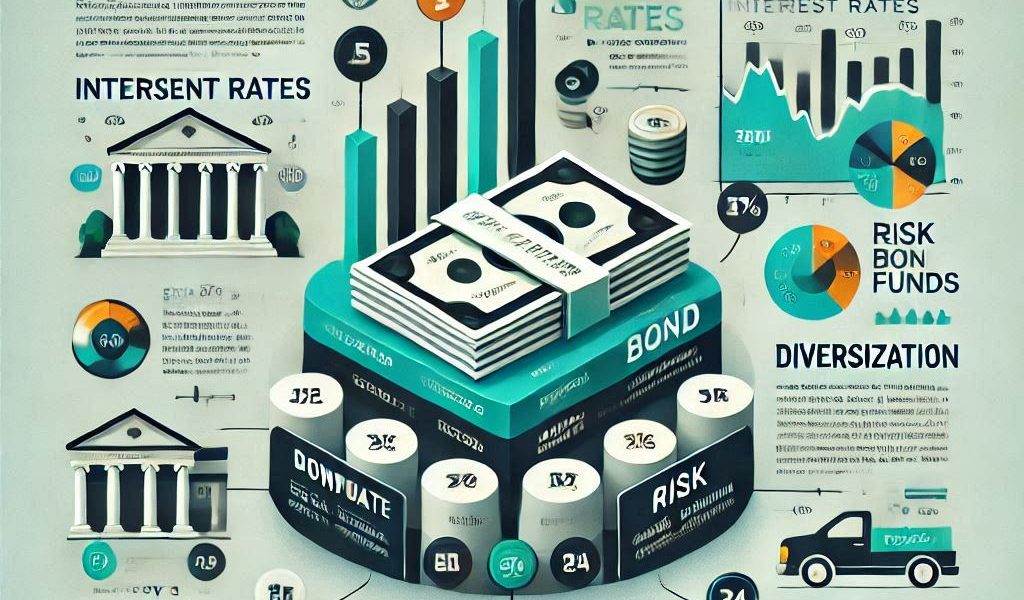Investing in bonds is a popular strategy for individuals seeking to diversify their portfolios and generate steady income. Traditionally, bond investments were made through purchasing individual bonds, but in recent years, bond exchange-traded funds (ETFs) have become a preferred investment vehicle for many. In this blog post, we’ll dive into the world of Bond ETFs, explore their benefits and risks, and help you understand how they can fit into your investment strategy.
What Are Bond ETFs?
A Bond ETF is a type of exchange-traded fund that invests in a diversified portfolio of bonds. These ETFs are traded on stock exchanges, just like individual stocks, allowing investors to buy and sell shares throughout the trading day. Bond ETFs provide an easy and low-cost way to invest in a broad range of bonds, without having to purchase individual bonds themselves.
Just like traditional bond funds, Bond ETFs invest in government, corporate, municipal, or international bonds. They can hold bonds with various maturities, interest rates, and credit qualities, providing diversification across the bond market.
How Do Bond ETFs Work?
Bond ETFs work similarly to other ETFs. They pool together the capital from many investors and use it to purchase a diversified basket of bonds. These ETFs are then listed on the exchange, where investors can buy or sell shares in the ETF just like any other stock.
Each share of a bond ETF represents a proportionate interest in the bonds held by the fund. The price of a Bond ETF fluctuates throughout the day, reflecting the performance of the underlying bonds. The yield on a Bond ETF is determined by the yield of the bonds it holds, which is calculated based on the interest paid by the bonds in the ETF’s portfolio.
Benefits of Investing in Bond ETFs
1. Diversification
One of the main advantages of investing in Bond ETFs is diversification. Instead of investing in a single bond, Bond ETFs hold a wide variety of bonds with different issuers, maturities, and credit qualities. This reduces the risk associated with individual bonds, as the performance of one bond is unlikely to have a significant impact on the ETF’s overall performance.
2. Liquidity
Unlike individual bonds, which can be difficult to buy and sell, Bond ETFs are highly liquid. They can be bought and sold throughout the trading day at market prices. This flexibility makes them a popular choice for investors looking for a more accessible way to gain exposure to the bond market.
3. Low Fees
Bond ETFs generally have lower expense ratios than actively managed bond mutual funds. Since Bond ETFs are passively managed, with a goal to track the performance of a bond index, they tend to have lower management fees and trading costs compared to other actively managed bond funds.
4. Income Generation
Like individual bonds, Bond ETFs pay regular interest (often on a monthly or quarterly basis). For income-focused investors, Bond ETFs can provide a steady stream of income, which is especially attractive in low-interest-rate environments. Additionally, since they offer diversification, they may help investors reduce their overall income volatility.
5. Transparency
Most Bond ETFs disclose their holdings on a daily basis, allowing investors to see exactly what bonds are included in the fund. This level of transparency is a significant benefit, as it enables investors to make more informed decisions about their bond investments.
Different Types of Bond ETFs
Bond ETFs can be divided into several categories, based on the type of bonds they invest in. Here are a few common types:
1. Government Bond ETFs
These ETFs invest in government-issued bonds, such as U.S. Treasury bonds, municipal bonds, or bonds issued by foreign governments. Government bond ETFs are often considered low-risk investments due to the relatively stable nature of government-issued bonds.
2. Corporate Bond ETFs
Corporate bond ETFs invest in bonds issued by companies. These bonds typically offer higher yields than government bonds, but they also come with higher risk, as companies can default on their debt obligations. Corporate bond ETFs can be further categorized based on the credit quality of the bonds they hold (investment-grade or high-yield).
3. High-Yield Bond ETFs
High-yield bond ETFs, also known as junk bond ETFs, invest in bonds with lower credit ratings but higher yields. These ETFs can be riskier than other bond ETFs, as the issuers of these bonds are more likely to default. However, they can also provide greater potential returns for investors willing to take on additional risk.
4. Municipal Bond ETFs
Municipal bond ETFs invest in bonds issued by local or state governments. These bonds often offer tax advantages for investors, as the interest earned may be exempt from federal income taxes and, in some cases, state and local taxes as well. Municipal bond ETFs are popular among investors in higher tax brackets.
5. International Bond ETFs
International bond ETFs invest in bonds issued by foreign governments and corporations. These ETFs provide exposure to global bond markets, allowing investors to diversify their bond holdings internationally. However, investing in international bonds also introduces risks related to currency fluctuations and geopolitical factors.
Risks of Investing in Bond ETFs
While Bond ETFs offer several benefits, they also come with risks that investors should be aware of. Here are some of the main risks:
1. Interest Rate Risk
Bond prices are inversely related to interest rates. If interest rates rise, the price of existing bonds in the ETF may fall, which could lead to a decline in the value of the Bond ETF. This risk is particularly significant for long-duration bonds, as their prices are more sensitive to interest rate changes.
2. Credit Risk
For corporate and high-yield bond ETFs, there is a risk that the issuers of the bonds may default on their payments. While diversification helps mitigate this risk, it’s important to assess the credit quality of the bonds held in the ETF before investing.
3. Inflation Risk
Bonds, including those in Bond ETFs, are vulnerable to inflation risk. If inflation rises, the real value of the bond’s interest payments and the principal repayment at maturity may decrease. This is particularly a concern for long-term bond ETFs, as their fixed payments may not keep up with inflation.
4. Liquidity Risk
While Bond ETFs are generally liquid, there can be times when market conditions create lower liquidity, especially during periods of financial stress. This could make it harder to buy or sell shares at desired prices, although this risk is typically lower than with individual bonds.
How to Choose the Right Bond ETF for Your Portfolio
When selecting a Bond ETF, it’s essential to consider your investment goals, risk tolerance, and time horizon. Here are some factors to keep in mind:
- Investment Goals: If you are seeking safety and stability, government bond ETFs may be the best fit. If you’re looking for higher income potential, corporate or high-yield bond ETFs could be more appropriate.
- Interest Rate Environment: In a rising interest rate environment, short-duration bond ETFs may be more favorable than long-duration bond ETFs, as they are less sensitive to interest rate changes.
- Diversification: Look for Bond ETFs that offer a diversified portfolio across different sectors and bond types. This can help mitigate risks and provide more consistent returns.
Conclusion
Bond ETFs are an excellent way for investors to gain exposure to the bond market with a lower cost, greater flexibility, and more diversification than individual bonds. They are ideal for those looking for steady income and a balanced portfolio. However, like any investment, Bond ETFs come with risks, including interest rate risk and credit risk. By understanding how Bond ETFs work and carefully selecting the right one for your investment goals, you can make informed decisions to enhance your portfolio.




